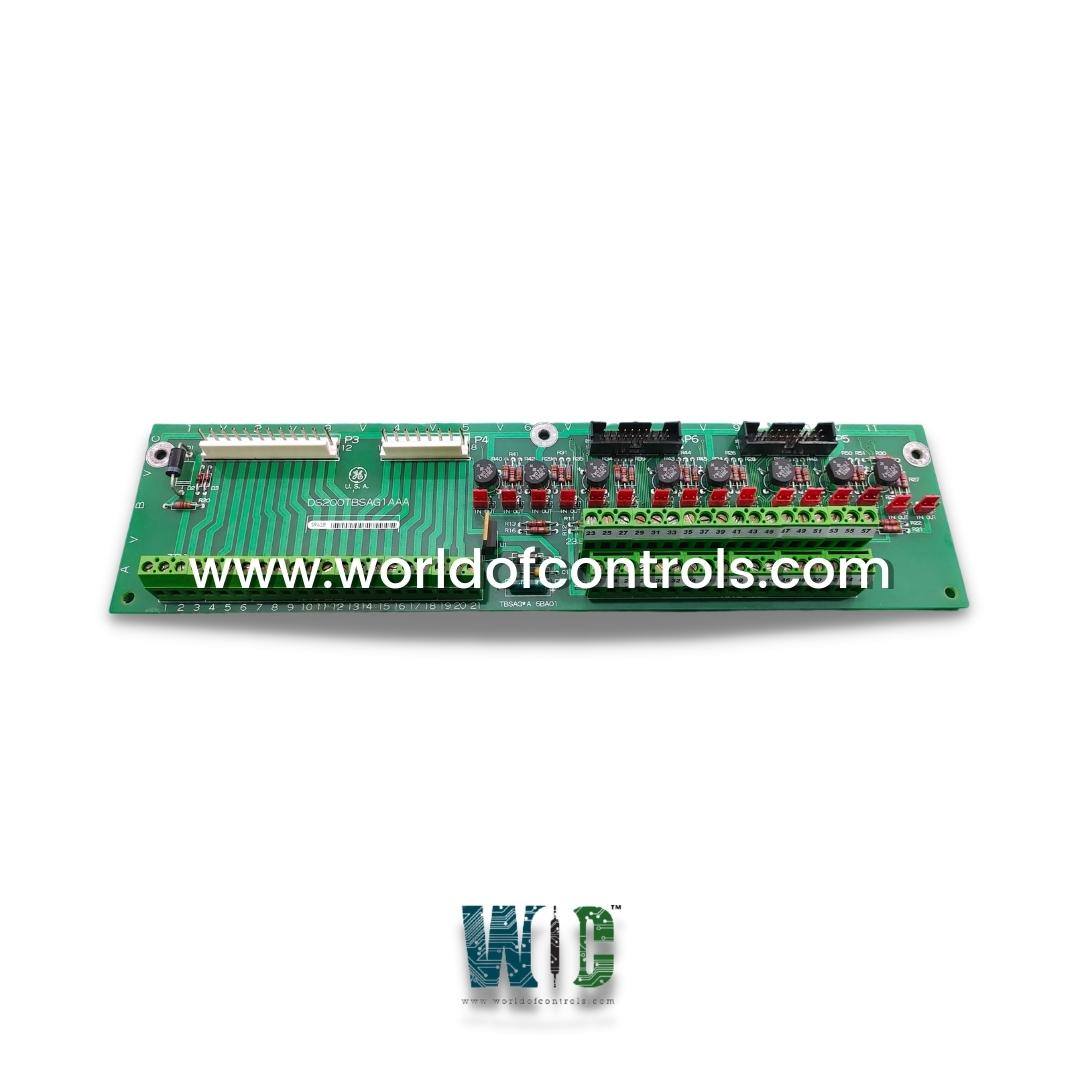SPECIFICATIONS
Part No.: DS200TBSAG1AAA
Manufacturer: General Electric
Country of Manufacture: United States of America (USA)
Product Type: Serial Communication Termination Module
Availability: In Stock
Series: Mark V
Functional Description
DS200TBSAG1AAA is a serial communication termination module developed by GE. It is a part of the Mark V control system. Located in location eight of the R2 core, the TBSA terminal board functions in managing signals from externally-mounted components in DLE applications.
Features
- Location: The terminal board is situated in location eight of the R2 core, strategically placed to handle specific signals critical for DLE applications.
- Integration Details: It connects directly with the externally-mounted XDSA board, which manages pressure transducer signals essential for monitoring and controlling engine parameters in DLE setups. Additionally, it interfaces with the FMVED (Fuel Metering Valve Electronics Driver) serial link wires, which are connected to the PCM (Power Conversion Module) daughterboard on the IO Engine in the R2 core. This connection facilitates communication and control over fuel metering operations within the engine system.
- Pressure Transducer Signals: The terminal board receives pressure transducer signals from the XDSA board. These signals are crucial for monitoring combustion chamber pressures and optimizing engine performance in DLE configurations. These signals are then transmitted to the TCSA board in the R core for further processing and integration into the engine control system.
- FMVED Signals: The terminal board also manages FMVED signals, which are critical for controlling the fuel metering valve electronically. These signals are directed to the PCM daughterboard on the IO Engine in the R2 core, enabling precise fuel flow regulation based on real-time operational requirements.
Connections
- The P3 connection on the TBSA terminal board serves a dual role in facilitating power distribution and signal transmission essential for DLE (Dry Low Emissions) applications. It receives a stable 12 V DC power supply from the TCSA board located in the R core, ensuring consistent power delivery to the serial pressure transducers used for monitoring combustion chamber pressures. Simultaneously, P3 establishes a pathway for transmitting these pressure signals back to the TCSA board in the R core. This integrated functionality supports real-time monitoring and control of critical engine parameters, enhancing operational efficiency and emissions compliance in industrial environments.
- Connected to the board in the R core, the P4 connection on the TBSA terminal board plays a pivotal role in managing power distribution for FMVED (Fuel Metering Valve Electronics Driver) motor controllers. It receives a dedicated 12 V DC power supply from the TCSA, ensuring reliable operation of the motor controllers responsible for electronically regulating fuel flow in DLE applications. This connection not only supports efficient power distribution but also contributes to maintaining precise control over fuel metering operations, enabling the engine to respond dynamically to varying operational demands while adhering to stringent environmental standards.
- The P5 connection on the TBSA terminal board establishes critical communication links between FMVED communication channels 1 and 2 and the PCM (Power Conversion Module) daughterboard located on the UCPB (Universal Control Processor Board) in the R2 core. This connection facilitates direct and seamless transmission of data between the FMVED system and the PCM daughterboard, enabling comprehensive monitoring and control over fuel metering processes. By ensuring reliable communication pathways, P5 enhances the system's capability to adjust fuel flow in response to real-time operational data, optimizing engine performance and fuel efficiency in industrial settings.
- Similar to P5, the P6 connection on the terminal board facilitates communication between FMVED communication channels 3 and 4 and the PCM daughterboard on the UCPB in the R2 core. This connection extends the capability of the FMVED system to transmit essential data signals necessary for precise fuel metering control. By enabling seamless integration and data exchange, P6 enhances the responsiveness of the engine's fuel management system, ensuring optimal performance and operational reliability. Together with other connections on the TBSA terminal board, P6 supports enhanced operational efficiency..
The WOC team is always available to help you with your Mark V requirements. For more information, please contact WOC.
Frequently Asked Questions
What is DS200TBSAG1AAA?
It is a serial communication termination module developed by GE under the Mark V series.
What does the P3 connection on the terminal board do?
P3 receives 12 V DC power from the TCSA board and connects to serial pressure transducers, facilitating power supply and signal transmission for combustion chamber pressure monitoring in DLE applications.
How does the P4 connection contribute to the board functionality?
P4 receives 12 V DC power from TCSA and powers FMVED motor controllers, crucial for electronically regulating fuel flow in DLE applications, ensuring precise control and operational efficiency.
What is the role of the P5 connection on the TBSA terminal board?
P5 links FMVED communication channels 1 and 2 to the PCM daughterboard on the UCPB in the R2 core, enabling direct data transmission for enhanced fuel metering control and operational optimization.
